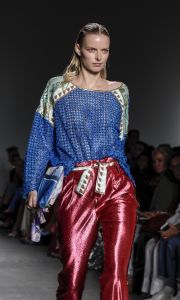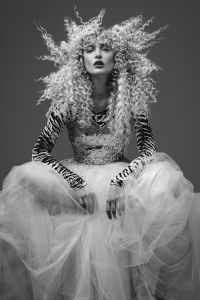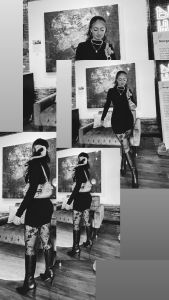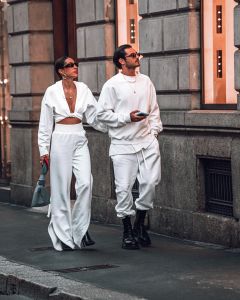Fashion Weeks are not just glittering spectacles; they are transformative forces shaping the very fabric of the fashion industry and influencing consumer trends worldwide. Once confined to exclusive gatherings, these events have evolved into global phenomena, setting the stage for designers’ creativity, sparking consumer demand, and championing values like sustainability and inclusivity. We explore the profound impact of Fashion Weeks on the industry and our choices in the fashion world.
The Evolution of Fashion Weeks
Fashion Weeks has undergone a remarkable evolution since its inception. Originally, they were exclusive industry events in fashion capitals like Paris, Milan, London, and New York. Over time, they have transformed into global spectacles, with cities from Shanghai to Sao Paulo hosting their versions.
This expansion reflects the ever-growing influence of the fashion industry on a global scale. Fashion events are no longer confined to a select elite; they have become a showcase for diverse talent and design perspectives worldwide. Fashion Weeks play a crucial role in shaping the industry and consumer trends as they continue to evolve.
The Role of Designers and Collections
At the heart of Fashion Weeks are the designers and their collections. These events provide a platform for designers to unveil their latest creations, setting the tone for upcoming trends. The fashion industry prospers on innovation and creativity, and Fashion Weeks is where designers push boundaries and experiment with new concepts.
Whether it’s avant-garde couture or ready-to-wear collections, the designs showcased on the runway serve as a barometer of what’s to come in the fashion world. Designers are the architects of the trends that will ripple through the fashion ecosystem, influencing what we wear and how we express ourselves through clothing.
Influence on Runway to Retail
The journey from the runway to retail is a pivotal aspect of Fashion Weeks. Traditionally, there was a significant time gap between when designs were showcased on the runway and when they became available to consumers. However, the rise of the “see now, buy now” model has disrupted this conventional timeline.
In response to consumers’ desire for immediacy, some designers now make their collections available for purchase immediately after their runway shows. This shift has altered consumer behavior, as people increasingly expect instant access to the latest fashion trends. Fashion Weeks have become trendsetters and accelerators of the fashion cycle, blurring the lines between the runway and the retail store.

Celebrity Culture and Social Media
In the age of social media, Fashion Weeks has become a hotspot for celebrities and influencers. Celebrities from film, music, and sports industries grace the front rows, while influencers document every moment on social media platforms. This convergence of fashion, fame, and social media amplifies the reach and impact of Fashion Weeks.
When a celebrity is spotted wearing a designer’s creation on the runway, it can instantly become a trending topic. Social media like Twitter, TikTok and Instagram provide a global stage for fashion enthusiasts to discuss, critique, and emulate the styles they see during Fashion Week. The synergy between celebrities, influencers, and social media amplifies the influence of Fashion Weeks on consumer trends.
Sustainability and Inclusivity
Sustainability and inclusivity have emerged as significant themes in the fashion industry, and Fashion Weeks are no exception. Designers are increasingly conscious of the environmental and social impact of their creations. Sustainable materials, ethical practices, and inclusivity in casting have become focal points of Fashion Week discussions.
This shift considers an increasing awareness of the industry’s responsibility to address pressing global issues. Consumers are interested in what’s fashionable and want to support brands that align with their values. Fashion events are platforms showcasing these values, signaling a broader shift towards eco-conscious and inclusive fashion choices.
Regional Fashion Weeks and Emerging Markets
While the major fashion capitals continue to dominate the industry, regional Fashion Weeks and emerging markets are steadily gaining influence. Cities like Mumbai, Seoul, and Lagos are establishing themselves as fashion hubs, attracting attention from both designers and consumers. These regional events provide a platform for local talent and diverse perspectives, contributing to a more globalized fashion landscape.
With their burgeoning middle classes and growing appetite for fashion, emerging markets are becoming influential players. The rise of regional Fashion events and the expansion of the fashion map highlight the dynamic and evolving nature of the industry, as well as its ability to adapt to changing consumer demographics.

The Future of Fashion Weeks
As the fashion industry undergoes rapid digital transformation, the future of Fashion Weeks is a subject of speculation. Virtual experiences, live-streamed shows, and augmented reality are changing how consumers engage with fashion. However, the enduring importance of Fashion Weeks lies in their role as trendsetters and taste makers. These events will likely continue to evolve, embracing digital innovations while maintaining their essence as platforms for creativity and self-expression. In a world where fashion is not just about clothing but also cultural expression, Fashion shows remains at the forefront of shaping the industry and consumer trends. Fashion events are platforms for designers to showcase their latest collections and set industry trends. Their significance lies in their role as trendsetters and influence on consumer choices.

Fashion Weeks has evolved from exclusive industry events to global phenomena, driven by the fashion industry’s increasing global reach and the demand for diverse design perspectives. Designers play a central role in shaping fashion trends during Fashion Week. Their creative innovations set the tone for upcoming styles and consumer choices. Can you explain the connection between runway designs and mainstream retail, and how does “see now, buy now” fit into this? Runway designs influence mainstream retail by inspiring fashion brands to create similar styles. The “see now, buy now” model allows consumers to purchase runway designs immediately after they are showcased. Celebrities and influencers attending Fashion Weeks and sharing their experiences on social media amplify the reach and impact of these events. This convergence influences consumer choices and trends.
Conclusion
Fashion Weeks remain potent catalysts in shaping the fashion industry and consumer trends. Their evolution from exclusive gatherings to global spectacles mirrors the industry’s expansion and adaptability. During these events, designers’ creative prowess, the “see now, buy now” model,
the influence of celebrities and social media, and the growing emphasis on sustainability and inclusivity converge. Regional Fashion events and emerging markets further diversify the fashion landscape. While the future of Fashion Weeks may involve digital innovations, their enduring significance lies in their ability to set trends and express cultural narratives through fashion. As long as fashion remains a powerful form of self-expression, Fashion Weeks will continue to shape the industry and consumer trends.





